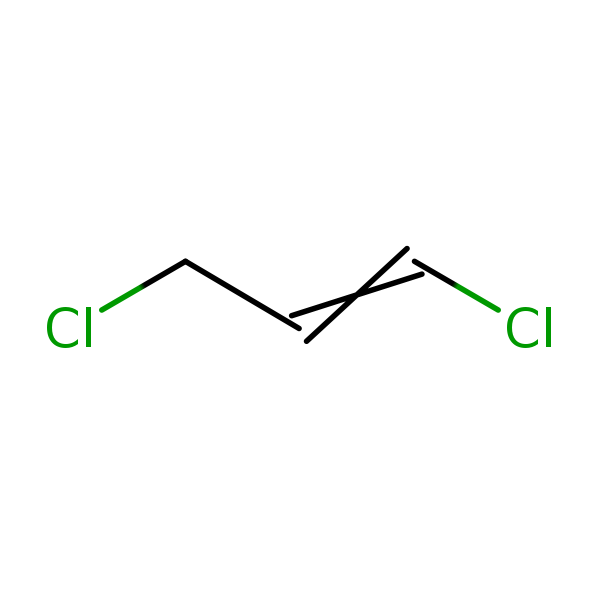1,3-Dichloropropene
CASRN 542-75-6 | DTXSID1022057
- Toxicological Review (PDF) (83 pp, 394 K)
- IRIS Summary (PDF) (34 pp, 213 K)
Noncancer Assessment
Reference Dose for Oral Exposure (RfD) (PDF)
(34 pp, 213 K)
Last Updated: 05/25/2000
| System | RfD (mg/kg-day) | Basis | PoD | Composite UF | Confidence |
|---|---|---|---|---|---|
| Gastrointestinal | 3 x 10 -2 | Chronic irritation |
BMDL
10
:
3.4
mg/kg-day |
100 | High |
Reference Concentration for Inhalation Exposure (RfC) (PDF)
(34 pp, 213 K)
Last Updated: 05/25/2000
| System | RfC (mg/m3) | Basis | PoD | Composite UF | Confidence |
|---|---|---|---|---|---|
| Respiratory | 2 x 10 -2 | Hypertrophy/ hyperplasia of the nasal respiratory epithelium |
BMCL
10
(HEC):
7.2
x 10-1 mg/m3 |
30 | High |
Cancer Assessment
Weight of Evidence for Cancer (PDF)
(34 pp, 213 K)
Last Updated: 05/25/2000
| WOE Characterization | Framework for WOE Characterization |
|---|---|
| B2 (Probable human carcinogen - based on sufficient evidence of carcinogenicity in animals) | Guidelines for Carcinogen Risk Assessment (U.S. EPA, 1986) |
| Known/likely human carcinogen | Proposed Guidelines for Carcinogen Risk Assessment (U.S. EPA, 1996) |
- Although the available human data are inadequate, 1,3-dichloropropene is characterized as "likely" to be a human carcinogen in accordance with the Proposed Guidelines for Carcinogen Risk Assessment (U.S. EPA, 1996).
- This may be a synopsis of the full weight-of-evidence narrative.
Quantitative Estimate of Carcinogenic Risk from Oral Exposure (PDF) (34 pp, 213 K)
Oral Slope Factor:
1
x 10-1
per mg/kg-day
Drinking Water Unit Risk:
3
x 10-6
per µg/L
Extrapolation Method: Linearized multistage model, extra risk
Tumor site(s): Urinary
Tumor type(s): Urinary bladder carcinoma (NTP, 1985)
Oral Slope Factor:
5
x 10-2
per mg/kg-day
Drinking Water Unit Risk:
2
x 10-6
per µg/L
Extrapolation Method: Linearized multistage model, extra risk
Tumor site(s): Hepatic
Tumor type(s): Hepatocellular adenoma/carcinoma (NTP, 1985)
Oral Slope Factor:
5
x 10-2
per mg/kg-day
Drinking Water Unit Risk:
1
x 10-6
per µg/L
Extrapolation Method: Linearized multistage model, extra risk
Tumor site(s): Hepatic
Tumor type(s): Hepatocellular adenoma/carcinoma (Stott et al., 1995)
Quantitative Estimate of Carcinogenic Risk from Inhalation Exposure (PDF) (34 pp, 213 K)
Inhalation Unit Risk:
4
x 10-6
per µg/m3
Extrapolation Method: Linearized multistage model, extra risk
Tumor site(s): Respiratory
Tumor type(s): Bronchioalveolar adenoma (Lomax et al., 1989)
- Human Health Benchmarks for Pesticides (HHBP). This database provides human health benchmarks for pesticides that may be present in drinking water.
- Office of Pesticide Programs Pesticide Chemical Search. This database provides links to health effects information and registration status for pesticides.
- Chemistry Dashboard. This database provides information on chemical structures, experimental and predicted physicochemical, and toxicity data.
You will need Adobe Reader to view some of the files on this page. See EPA's PDF page to learn more.
Contact Us to ask a question, provide feedback or report a problem.






